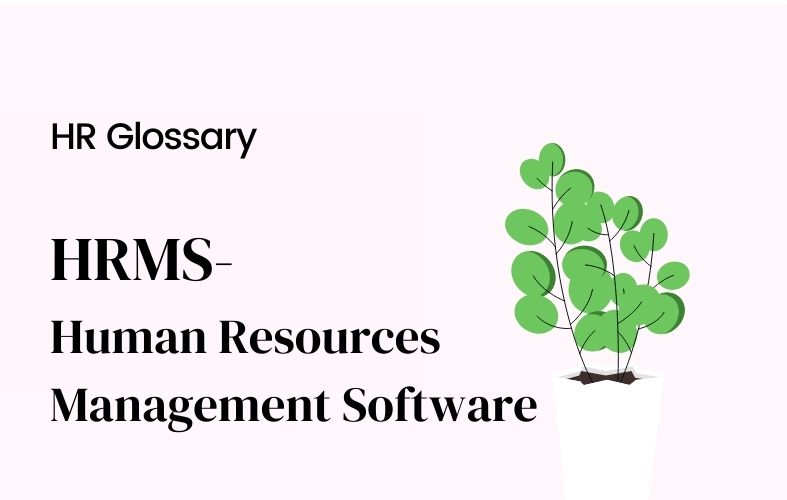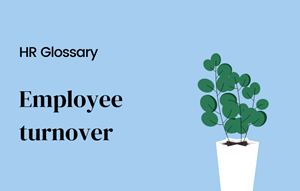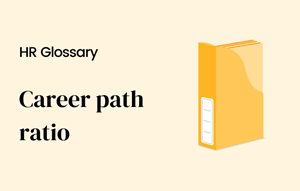HRMS (Human Resource Management System)

[Sommaire]
What is HRMS?
An HRMS (Human Resource Management Systems) is software that lets companies manage everything HR-related. They are often confused with HRIS (Human Resource Information Systems), but unlike these HRIS, an HRMS is broader and more all-encompassing.
How does an HRMS work?
An HRMS typically contains all employee data in one central database. This data can be accessed by authorized personnel from anywhere, at any time.
The system will also have a user-friendly interface that lets talent management professionals and managers run reports, manage absences, and view employee engagement and data.
Some HRMS also offer employee self-service portals. These let employees update their own data, such as contact details or absences.
What are the functions of an HRMS?
Optimization:
A human resources management system can automate and optimize many HR processes. This includes onboarding new employees, tracking employee performance, and managing payroll. By automating these processes, an HRMS can save the HR team a lot of time and improve efficiency.
Data management:
As mentioned above, an HRMS contains all employee data in one central database. This lets HR managers easily access employee data when they need it. Additionally, it can help to ensure that data is accurate and up-to-date.
Reporting:
An HRMS can generate a variety of reports. This includes reports on employee performance, payroll, absences, and more. These reports can be used to help make decisions about HR strategy and policy.
What is the difference between an HRMS and an HRIS?
There is a level of disagreement about the difference between HRMS systems and HRIS, and some experts believe the only difference between the systems is between the names. However, it is commonly agreed that the difference between an HRIS and HRMS is in the level of detail that the software holds.
An HRIS (human resources information system) helps manage employees, policies, and procedures.
In contrast, an HRMS (Human resources management systems) is a complete offering that provides workforce management processes and features to help your organization operate globally, such as multi-currency, multi-lingual, and options to change details by location.
For this reason, it is clear to see that a smaller organization operating in one country would be better suited to an HRIS. In contrast, a larger organization operating across several countries would find an HRMS better suited to their needs.
What are the features of an HRMS?
The features of an HRMS can vary depending on the software. However, an HR management system will offer the following features:
- Employee data management: This allows the HR department to store and view the entire employee lifecycle data in one place.
- Leave management: HR department can track employee absences and vacations.
- Performance management: Let HR set goals and objectives for employees, and track their progress.
- Onboarding: Helps HR managers onboard new employees by automating onboarding processes.
- Training and development: HR can create and manage training programs for employees.
- Employee self-service portal: This allows employees to update their own data, such as contact details or absences.
What are the benefits for a company of using an HRMS?
Using an HRMS can help a company in many ways. The main benefits include:
Safer, more centralized data storage
Instead of storing data on computer hard drives, an organization’s network, or even in filing cabinets, using an HRMS will centralize all employee data. This makes it easier to find key information and ensure version control.
It also makes reporting simpler and makes it easier to access compliance records. Moreover, encrypted data storage is more secure than standard network or hard-drive storage, helping protect employee data.
Reduced human error
By automating HR tasks, an HRMS helps reduce the chances of mistakes such as duplicated data or incorrect dates. The higher level of employee transparency means employees can check their details to ensure there are no typos or inaccurate information.
Fewer HR systems to integrate
By using a central HRMS software, there are fewer systems in use. This makes life less confusing for employees and HR professionals alike. It may also mean an overall more economical approach to HR software as there may be savings from sourcing software from just one supplier.
Easier access from anywhere
As most HRMS are cloud-based, employees and HR professionals can access the software from anywhere. This is especially helpful for remote, flexible employees or who travel with work.
Easier reporting
Managers and HR professionals can use an HRMS interface to pull up standard reports for instant review and analysis.
Employee self-service
Employees can update personal data without needing to involve the HR team. This reduces demands on the HR team and gives employees visibility of the data the organization holds on them.
Easier employee management
HRMS can help reduce the administration associated with managing employees and automate some tasks. These typically include absence management, payroll, performance management, onboarding, and training.
What are the reasons for moving your HRMS to HCM Cloud?
There are many reasons for moving your HRMS to the cloud. The main reasons include:
-
Improved security:
Cloud-based HRMS often have stronger security features than on-premises HRMS. This is because cloud providers invest heavily in security and have teams of experts dedicated to keeping data safe.
-
Scalability:
An HRMS software can scale up or down quickly and easily to meet the needs of a growing or shrinking workforce.
-
Flexibility:
A cloud-based HRMS can be accessed from anywhere, at any time. This is ideal for organizations with remote or traveling employees.
-
Cost savings:
Cloud-based HRMS are often more cost-effective than on-premises human capital management systems, as there is no need to invest in hardware or software.
What are the challenges of using an HRMS?
Despite the many benefits of using an HRMS, there are a few challenges to be aware of:
Data privacy:
Some organizations may be concerned about entrusting employee data to a third-party cloud provider.
Vendor lock-in:
When an organization uses a particular HRMS for a long time, it may become ‘locked in’ to that vendor. This can make it difficult and costly to switch to a different HRMS in the future.
Complexity:
HRMS can be complex to set up and use. Organizations may need to invest in training for employees on how to use the system.
What are the different types of HRMS?
There are several different types of HRMS, each with its own benefits and drawbacks:
On-premises HRMS:
An on-premises HRMS is installed on the organization’s own servers. This gives the organization more control over the HRMS but requires a larger up-front investment.
Cloud-based HRMS:
A cloud-based HRMS is hosted by the vendor and accessed via the internet. This is usually a monthly subscription service and is often more flexible and scalable than an on-premises HRMS.
Mobile HRMS:
A mobile HRMS can be accessed on a smartphone or tablet. This is ideal for organizations with remote or traveling employees.
Open-source HRMS:
An open-source HRMS is free to use but requires more technical expertise to set up and maintain.


